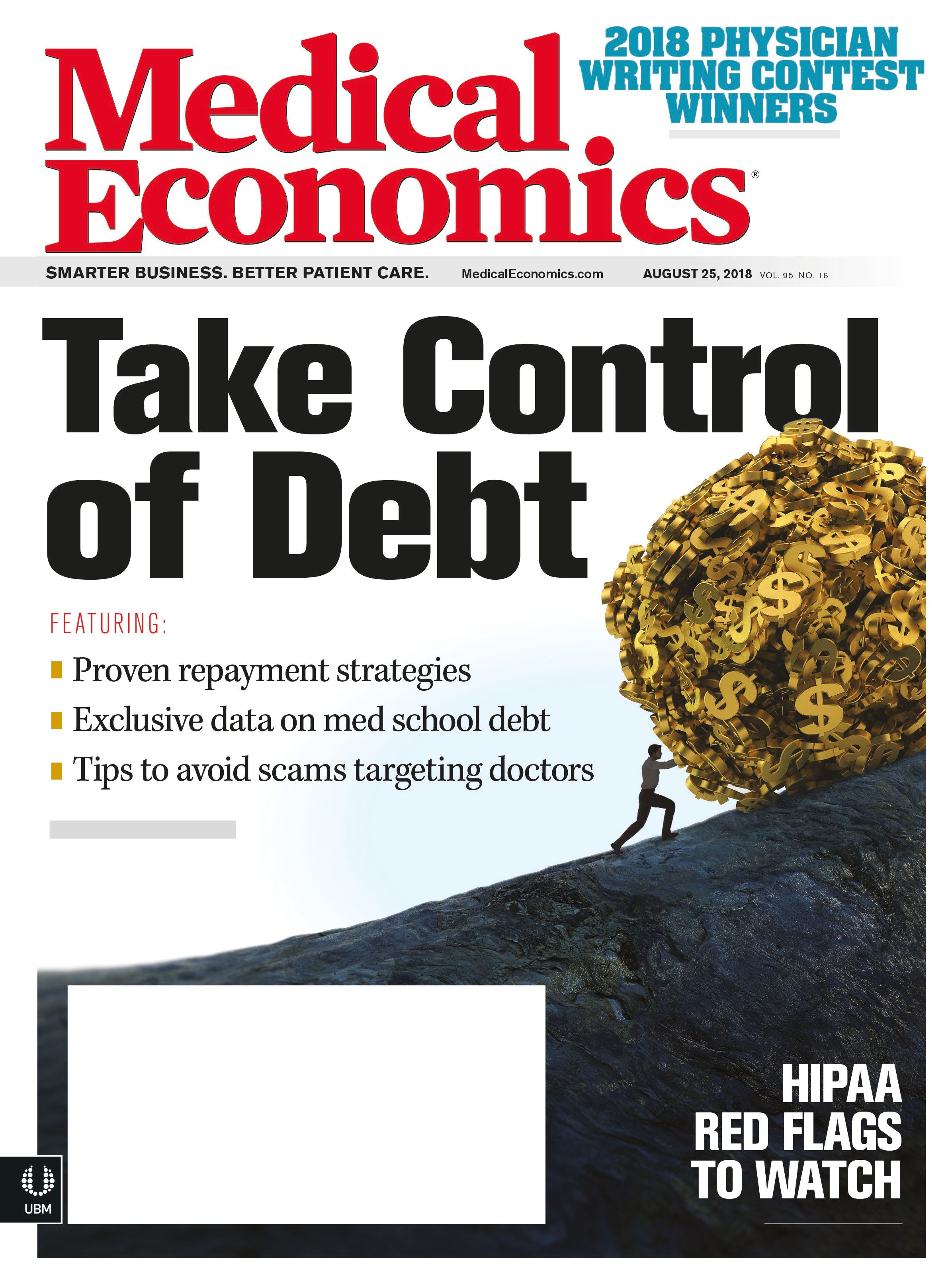Publication
Article
Medical Economics Journal
When debt derails physicians, we all lose
Author(s):
If medical debt keeps diverting doctors away from primary care, the projected shortage will grow exponentially.
Thanks to an anonymous $3 million donation, the inaugural class of the University of Houston's medical school will not have to worry about their tuition. The school, established last year, will focus on primary care education.
If only every doctor were as lucky as these 30 budding physicians.
According to new data from Medical Economics, three in 10 physicians complete their education with more than $200,000 in debt.
That’s quite a burden for someone starting a new career in healthcare. Our data also indicate a similar number (31 percent) say their level of debt determined their employment path in medicine. It’s not a stretch to think that opening a practice with your name on the door is a far-off dream when calculating debt repayment.
That’s bad for many physicians who have a knack for being an entrepreneur, but lack the financial means. It also negatively affects those who decide not to go into primary care and instead choose specialty medicine which can reduce their debt in a shorter amount of time.
Medical students have told me they were dissuaded from going into family or internal medicine by professors, who describe a life of long hours, low pay, and administrative nightmares. These same students hear that sacrificing autonomy to work for a hospital or health system is a small price to pay compared with doubling the time it takes to pay back loans by going independent or joining a new practice.
We must drive eager young students toward primary care, not away from it. This includes making more programs such as scholarships and debt forgiveness a reality for tomorrow’s physicians.
In this issue, you’ll read more about how physicians overcame their educational (and other) debt burdens to focus solely on medicine, including several great programs to reward primary care physicians for their choice of specialty and the location of their practice. There are lots of opportunities out there, but we need many more, and soon.
Burnout is claiming some of primary care’s best and brightest. Technology is claiming others who are walking away from the exam room for other avenues to help patients. And if medical debt keeps diverting doctors away from primary care, the projected shortage will grow exponentially.
Medical associations and others should work to increase scholarship opportunities and use their influence to make medical school as affordable for future primary care physicians in any way possible.
Wealthy benefactors are few and far between. Instead of waiting for someone to fix the problem, it’s time to address it today.






